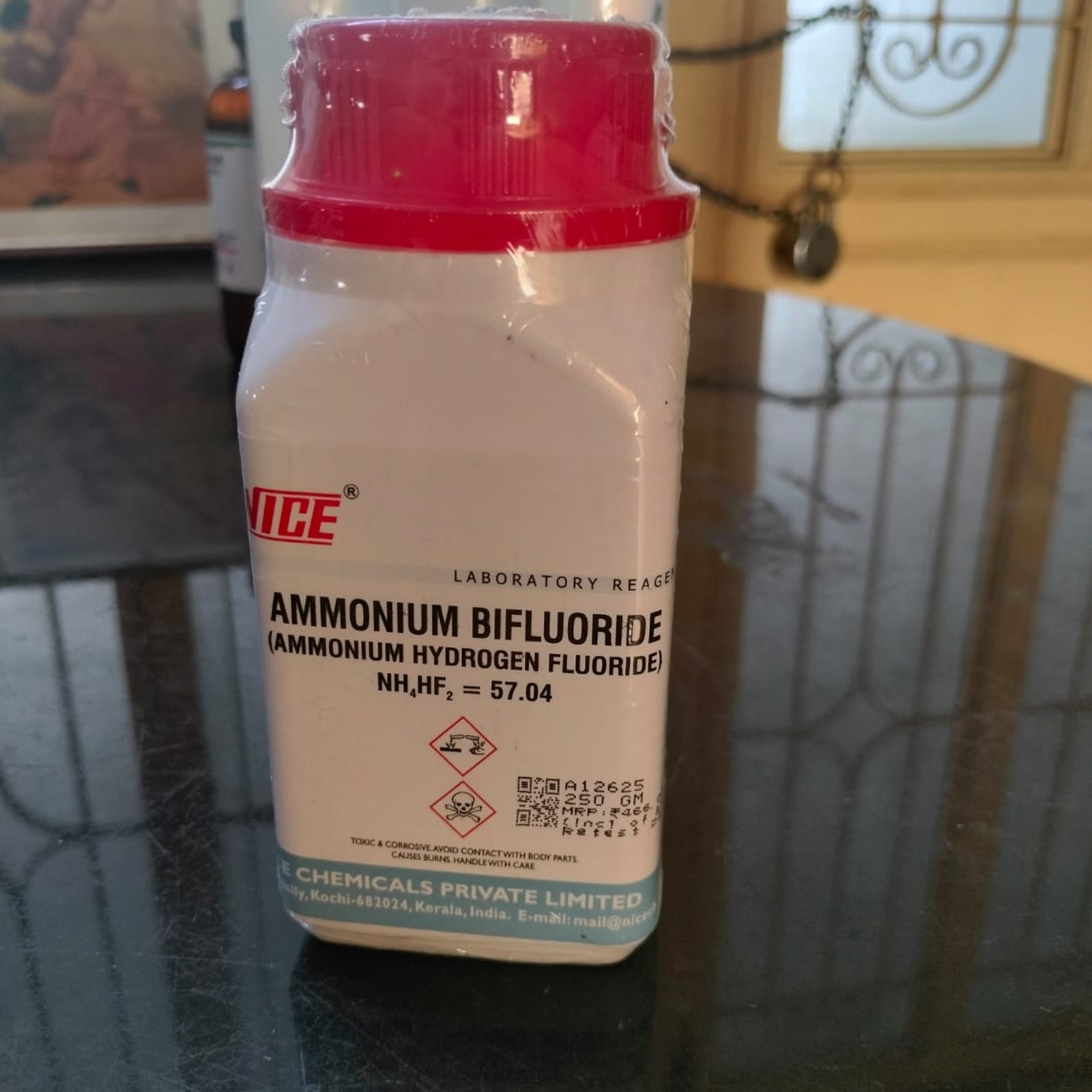
2025-10-10T07:52:12
Ammonium bifluoride is a white, crystalline inorganic compound used for glass etching, metal pickling, and as a preservative or disinfectant in various industrial applications. It is toxic and corrosive, can dissolve in water, and decomposes when heated. Due to its hazardous nature, it must be handled with protective gear and stored properly. ApplicationsAmmonium bifluoride is used in a variety of industrial applications, particularly for its ability to etch glass and clean metal surfaces. It is considered a safer, more controlled alternative to hydrofluoric acid for many tasks. Common uses include: Glass etching: It is a key component in glass etchants, where it reacts with the silica component of glass to create a frosted or patterned finish. Metal processing: It is used for cleaning and preparing metal surfaces by removing oxides. This includes applications like preparing steel before nickel plating or tin before copper plating, and brightening aluminum. Industrial cleaning: It removes silica-based scale from equipment such as boilers, evaporators, and heat exchangers. Oil and gas industry: It is used in well acidizing to dissolve silicate rocks and increase oil flow. Electroplating: It is used as an additive in certain electroplating processes. Wood preservatives: It can be used as an ingredient in formulations for preserving wood. Hazards and safety precautionsAmmonium bifluoride is a toxic and corrosive substance that requires careful handling. Reactivity: When dissolved in water, it forms hydrofluoric acid, creating a risk of hydrofluoric acid burns. Handling: Because it is corrosive and attacks glass, it must be stored in plastic or other non-reactive containers. Safety gear: When handling ammonium bifluoride, personal protective equipment (PPE) such as protective clothing, gloves, and eye protection must be worn. First aid: In case of skin contact, the area should be rinsed with water and followed by a treatment of calcium gluconate gel to neutralize the fluoride ions. Because of its hazardous nature, many cleaning professionals advise against its use in settings like car washes. Toxicity: It is toxic if swallowed or inhaled and is a severe skin and eye irritant.

Have a question? Ask here!
Required fields are marked *